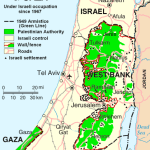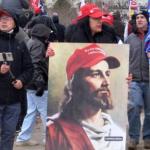One-in-five Americans (19 percent) are religious progressives, while 38 percent are religious moderates, 28 percent are religious conservatives, and 15 percent are nonreligious, a new survey finds.
The new Economic Values Survey, conducted by Public Religion Research Institute in partnership with the Brookings Institution, was used to develop a new religious orientation scale that combines theological, economic and social outlooks in order to paint a new portrait of the American religious landscape.
“Our new research shows a complex religious landscape, with religious conservatives holding an advantage over religious progressives in terms of size and homogeneity,” said Dr. Robert P. Jones,CEO of Public Religion Research Institute. “However, the percentage of religious conservatives shrinks in each successive generation, with religious progressives outnumbering religious conservatives in the Millennial generation.”
Religious progressives are significantly younger and more diverse than their conservative counterparts. The mean age of the religious progressive population is 44 – just under the mean age in the general population of 47 – while the mean age of religious conservatives is 53. Twenty-three percent of Millennials (ages 18-33) are religious progressives, while 17 percent are religious conservatives. Among Millennials, there are also nearly as many nonreligious (22 percent) as religious progressives. Conversely, 12 percent of the Silent Generation (ages 66-88) are religious progressives, while 47 percent are religious conservatives. One-in-ten (10 percent) of the Silent Generation are nonreligious.
Religious progressives are considerably more diverse than religious conservatives. Catholics (29 percent) constitute the largest single group among religious progressives, followed by white mainline Protestants (19 percent), those who are not formally affiliated with a religious tradition but who nevertheless say religion is at least somewhat important in their lives (18 percent), and non-Christian religious Americans such as Jews, Buddhists, Hindus and Muslims (13 percent). Notably, white evangelical Protestants constitute only four percent of religious progressives. By contrast, white evangelical Protestants constitute more than 4-in-10 (43 percent) religious conservatives, followed by Catholics (17 percent) and white mainline Protestants (15 percent). Black Protestants comprise about 1-in-10 of both the religious progressive (9 percent) and religious conservative (8 percent) coalitions.
Read the rest here















